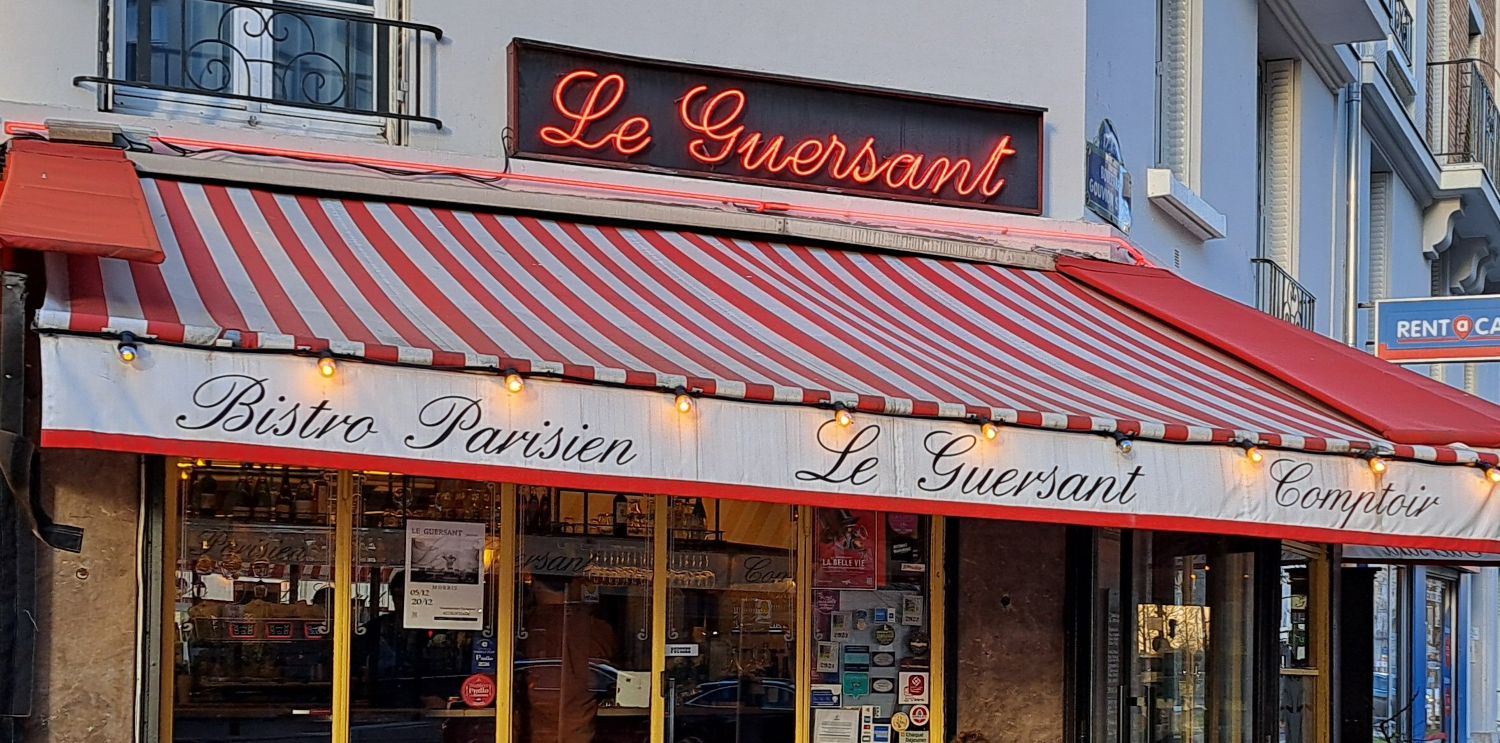
From a continuing series on Paris bistro life, a terrific neighborhood bistro and a delectable encounter with Rabelaisian bistro buddies, creators of a gargantuan guide to wine bistros.
There’s an association in Paris called the Académie Rabelais whose mission, as stated in their by-laws, is to “Encourage among its members and their friends joie de vivre, optimism, good humor, indulgence, gaiety, the spirit of friendship and of remembrance, and respect for the principles of Master François Rabelais: laughing, irony, wisecracking, joyful singing, le gai savoir, eating well and drinking well.”

Reading that mission statement, I thought, “Now there’s a party I’d like to attend!” And so I did, though we didn’t call it a party. We called it lunch with Bruno Carlhian, author of an excellent guide to owner-operated Paris wine bistros, and several members of the Académie Rabelais, under whose auspices the book was published.
La Tournée des Patrons is the clever title of Bruno’s guide. La tournée—the round or round-up—refers to both a round-up of bistro-keepers—des patrons—and the round on the house that owners might offer their clients. In selecting the 100 eatery-drinkeries included in the book, Bruno sought out “authentic” bistros (quotation marks in the original), which he defines as individually owned establishments open throughout the day (i.e. not just at mealtime) and that have a café/bar counter. Fresh, homecooked food is de rigueur, but most important is the presence and personality of the bistro-keeper, one who knows his wine.
A criminal defense attorney, a gallery owner and a contractor walk into a bistro
That’s not the opening of a joke but the start of a cheerful afternoon since they were the three fellow academy members to join Bruno and me at Le Guersant, a bistro on the western edge of Paris, in the 17th arrondissement. Bruno himself is a journalist specialized in food, wine, gastronomy and agribusiness. I’d asked him to choose the bistro for our lunchtime interview.
There’s no mistaking the atmosphere of a neighborhood bistro when you enter shortly before 1pm: several people are standing at the bar counter with a glass of wine or beer or a demitasse; someone behind the bar, who may or may not be the owner, looks up from his or her task to return your ecumenical Bonjour messieurs-dames with a Bonjour, monsieur; beyond the bar there’s a room with few if any empty seats, where a server, who may or may not be the owner, twists through narrow passages between tables or chairs carrying a thick pork chop and potato purée and a square of beef and frites or some such homey dishes; on nearly every table there’s a bottle or at least glasses of wine in various stages of consumption, and you recognize your lunch companions at the far table by the window by their slight nod in your direction, even if you’ve never met them before.
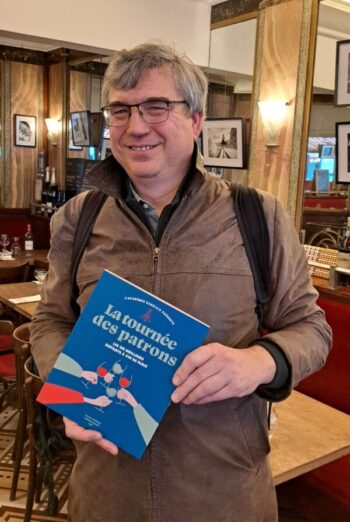
In choosing Le Guersant, Bruno was nearly giving me a scoop. The jury that he presides over within the Académie Rabelais had recently decided that in the spring of 2025 Nicolas Gounse, the bistro’s proprietor, would receive the academy’s trophy La Coupe du Meilleur Pot. The trophy has been awarded annually since 1954 to a bistro-keeper in Paris or the near suburbs whose establishment does justice to the notion that bistro life is best served by the offering of the quality wines of independent growers, personally selected by that bistro-keeper. The trophy takes the form of a wooden box topped with the tin decoration of a cup, a bunch of grapes and a specific kind of bottle called a pot. A pot is a 46 cl vessel with a thick base into which wine from a barrel or from a larger bottle is poured.
It isn’t the wine list itself that’s honored with the trophy. As with the selections in La Tournée des Patrons, the Académie Rabelais pays homage to a bistro-keeper with the wherewithal, the personality and the dedication to operate a welcoming all-day bistro with a bar counter. The wines available have been personally selected by the bistro-keeper as opposed to checked off from a list in a wholesaler’s catalogue. “Quality wines of independent growers” does not mean expensive wines. These are, after all, unpretentious, everyday neighborhood bistros. In short, when it comes to wine, Nicolas Gounse and other winners of La Coupe du Meilleur Pot can talk the talk, without pretention, with the best of them. And from the way the conversation unfolded at Le Guersant over the next 2½ hours, I gathered that my table companions from the Académie Rabelais were among those best of them.
Acceptance into the Académie Rabelais
The Académie Rabelais’s origins date to the Second World War, when a group of writers, journalists and cartoonists who’d left Paris during the German Occupation began gathering in Lyon, which was then in France’s Unoccupied Zone. Guided by local gastro-insiders well acquainted with the keepers of bouchons, as the bistros of Lyon are known, the group began meeting over food and wine. Progressively, as the German Gestapo took anchor in Lyon, those wartime gatherings came to an end. They were revived post-war, in 1948, at Château Thivin in the Beaujolais wine region near Lyon, where the group formalized their association as the Académie Rabelais. Refer to the opening lines of this article for the academy’s humanist mission. Among other events and outings, the academy gathers for dinner three times per year as well for one weekend in a wine region, where they meet winegrowers and restaurant owners.
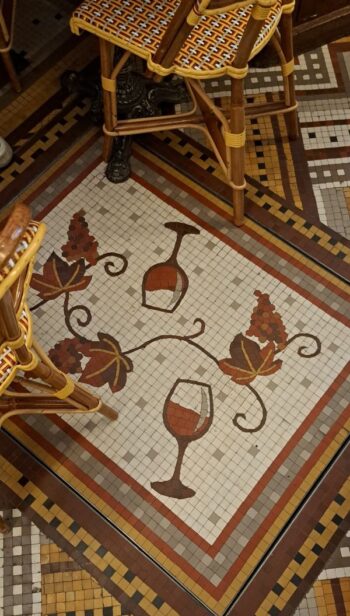
Nicolas Plescoff, the gallerist at the table, a specialist in 20th-century art and sculpture, has been the academy’s president for the past seven years. In recounting the academy’s history, he said that in the early 2000s membership underwent a significant change as the elder members from the press fell away and more recent arrivals worked in a variety of professional fields.
The group’s by-laws, which allow for a maximum of 50 members (there are current 46), don’t specifically exclude women, but as yet none has been admitted. Potential members are co-opted through personal relationships, not through blind application. Once recommended by a friend, colleague or family member, a candidate must first be accepted as an intern or apprentice. As such, he is expected to attend academy events for a full year in order to become familiar with its spirit, culture and members, and its members with him. After that year, the board gives an initial stamp of approval (or not) to the intern/apprentice whose candidature is then put before the full membership for a final vote.
With the academy no longer dominated by members of the press—in fact, there are now more lawyers among them—Nicolas Plescoff favors a membership represented by a wide variety of professional fields. As with many aging associations, the academy has difficulty recruiting younger members. He’s therefore is pleased that the academy recently co-opted a 27-year-old who works in the wine trade.
As to admitting women, he said that perhaps the next generation will be more accepting of the possibility, but for now there’s general agreement that the Académie Rabelais should remain an all-men’s club. Members don’t spend their time together making misogynistic or crude comments, he explained, but men change their behavior when their wives or other women are around, which would alter the spirit of the academy.
While the academy doesn’t admit women, make no mistake about it: the contemporary Parisian neighborhood bistro as a cultural institution is not a men’s club. At some times of the day and at some meals, men may indeed outnumber women in a neighborhood bistro, but women can and do enjoy a meal there with equal joy or warmth or indulgence. (Stay tuned for an upcoming article about bistro gals. As a teaser, I note that the president of one bistro-going women’s group told me that one reason they don’t admit men is the annoyance of dealing with mansplaining.)
The Académie Rabelais literary prize
While companionability, wine and gregarious service define a restaurant outing with members of the Académie Rabelais, the academy lives up to the literary side of its name. I refrain from calling any of its members “intellectuals.” In other settings, some of them may be. But once, while discussing books at a bistro bar counter, I made the mistake of referring to a stranger with whom I’d recently clinked glasses as an “intellectual” and I nearly got thrown into the gutter for it. In Paris bistro life, I’ve learned, you can refer to a well-read fellow as a philosopher, an artist, a professor, a wisecracker, even a prince or a fool, but call him an intellectual at your own risk and peril. Pas de ça ici, mon vieux! Suffice it to say that a clever, incisive, humanist spirit and a wealth of knowledge on assorted matters including human nature go a long way toward getting you accepted—if not to the academy, then at least to their companionship and to entertaining conversation in a Paris neighborhood bistro.
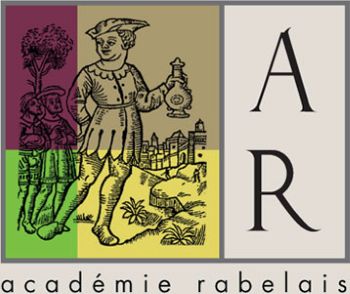
A jury within the academy awards an annual literary prize, the Prix de l’Académie Rabelais, to the author of a work of fiction or non-fiction displaying Rabelasian spirit, meaning a work that includes a good dose of irreverent humor, and, of course, wine. Appropriate works, according to the lawyer at our table, are hard to come by, what with all the navel gazing and humorlessness of French literature over the past few decades.
The winner of the 2024 literary prize was Laure Gasparotto for “Si tu veux la paix, prepare le vin” (If You Want Peace, Prepare Wine). The 2023 winner was Charles Senard for “Carpe diem – Petite initiation à la sagesse épicurienne” (Carpe Diem – A Little Initiation to Epicurian Wisdom). The winner receives 50 bottles of Beaujolais wine. Descriptions of the prize-winning books over the years can be found here.
Acceptance into Paris bistro life
Anyone, including non-French-speaking visitors, can take a seat in the dining room of a neighborhood bistro or lean into its bar counter to observe bistro life. Participating in it is another matter. That, according to Nicolas Plescoff, entails being accepted by the keeper of the house or his staff. Beyond the courteous tone of your entrance, newcomers, he said, will quickly be judged by what they order. Margins are tights, so “if you order only an appetizer and a glass of tap water during crowded mealtime,” he said, “you shouldn’t be surprised if you aren’t well received. You’re nearly obligated to order an appetizer, a main course, dessert and wine.” Though our table followed that recommendation and then some, that bona fide exchange of good will is certainly not an actual obligation. Three courses may be one too many for some appetites, which is why the lunch menu is often priced for an appetizer + a main course OR a main course + dessert.
Drinking alcohol is, of course, never an obligation. Yet, for those who do enjoy a glass or two, the following wine advice that Nicolas Plescoff provided is well worth considering: “To be accepted in a neighborhood bistro, first order a glass of white wine as an aperitif.”
“Un verre de vin blanc, s’il vous plaît” (A glass of white wine, please) as the easy-to-recall password to taking part in Paris bistro life? I’ve tried it. It does go far to initiating a conversation with the owner or server (what type of white wine would you’d like? dry, fruity, etc.) and lets that person know that you’re willing to spend a few extra euros at the table. “Un verre de beaujolais blanc, s’il vous plaît,” might further indicate that you’ve got some connoisseur’s cred.
It would be ill-mannered of me to note the quantity of wine consumed at our table during our lengthy lunch. I’ll just say that Nicolas Gounse guided us on a lilting viticultural tour de France. We may not have been typical clients—after all, more than familiar faces here, my table companions had recently notified him of the honor they were bestowing with La Coupe du Meilleur Pot—nevertheless, it was clear to me that we weren’t the only ones in the room in trotting conversation, eating and drinking to great satisfaction. Others around the room appeared to be doing the same. It wasn’t a party atmosphere but, more “authentically,” the ambience of an unhurried lunchtime break from whatever appointments or obligations lay to either side of the meal, in other words of a neighborhood bistro at lunchtime.
I was in no rush to leave. Still, at 2:15 on a Thursday afternoon, after 90 minutes of easy-going conviviality, I expected that any minute now one of my tablemates would state that he had to get back to work and the rest of us would then grudgingly agree. Another 30 minutes passed. Then one of the academicians called Nicolas Gounse over to the table. I was sure that it was to ask him to prepare the bill, or at least to bring coffee. Instead, he asked where we should travel next on our seated tour de France.
Drinking vs. excessive drinking
Bistro, in France, implies that alcohol is served. Wine bistro emphasizes the place of the wine selection there but is not to be confused with a wine bar. In theory, a dry bistro is possible, in the same way that admitting female members into the Académie Rabelais is possible.
Excessive drinking—or drinking at all—isn’t directly encouraged by the bistro-keepers that I’ve come to know. At a neighborhood bistro or wine bistro, selling alcohol does help with the bottom line; turning a profit might even depend on the sale of alcohol, as with many restaurants. The theoritical dry bistro would therefor have an economic challenge in France, perhaps overcome by serving lots of bubble tea.
“Wine is a part of our culture,” said Nicolas Plescoff, referring to both France and the academy. “But we aren’t an association of drunks. It’s important to maintain a certain standing. True, our dinners tend to be well served in wine. Perhaps we drink more than the national average, but we drink good wine.”

Nicolas Gounse, our host here, recognizes that wine is a part of daily life for some clients, the way cigarettes may be. Wine is a part of the culture (and one is free to argue that it shouldn’t be) but, wine or no wine, sociability is a primary aspect of the neighborhood bistro (le bistro de quartier). Without sociability (or refuge so for the solitary), there’d be no reason to qualify it as neighborhood (de quartier). Yes, drink does play a role here, though it would be incorrect to peg a neighborhood Paris bistro today, such as Le Guersant, which is open throughout the day, or the selections in La Tournée des Patron, as primarily drinking establishments or as places for a teetotaler to avoid. Above all, for readers of these lines, they should be seen as important glimpses into local or neighborhood culture.
Frequent consumption or over-consumption of alcohol may be a societal problem, but it isn’t not specific to wine bistros. In what may come off as a form of apology, I note that, fortunate for Parisians, those who have a glass or two or more in a wine bistro or any other type of eatery-drinkery, or at private party for that matter, typically leave on foot or take public transportation rather than get behind the wheel of a car. Getting behind the wheel of a bicycle or scooter is the more likely danger.
I pace myself well as bottles accumulate on the table. I may slow down or, if necessary, put my hand over the glass to announce that I’ve had enough as the circulating bottle tips my way. I nevertheless don’t hesitate to accept, as I did here, a bistro-keeper’s parting shot of grappa, cognac, calvados, or plum or pear brandy when it arrives with the bill or at the bar counter on the way out. I may not finish the small pour, and some of what’s offered may be rotgut, but I won’t refuse what is essentially a gift of acceptance, la tournée du patron. Again, no obligation.
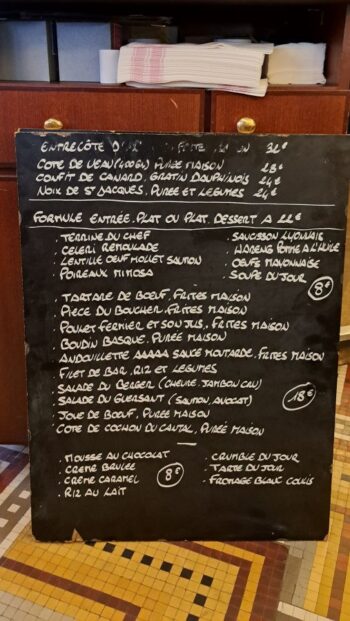
The deeper I’ve gotten into Paris bistro life over the past year, the more I’ve come to appreciate Bruno Carlhian’s selections in La Tournée du Patron. While Bruno and his fellow academicians more than hold their own in knowing and enjoying good cuisine, and while they do expect fresh and seasonal ingredients, the quality of the food is not primary in selections for the book or for La Coupe du Meilleur Pot, as it might be for a culinary guide or award. Nevertheless, I vouch for the quality (and the quantity) of my three courses (30€) at Le Guersant: poireaux mimosa, côte de cochon + purée, crème caramel.
I can certainly understand the selection of Nicolas Gousne as recipient for the 2025 Coupe du Meilleur Pot, And I can well imagine the pleasure of being a regular or occasional client at Le Guersant. Alas, it’s across the city from me.
Altogether, a terrific neighborhood bistro and a delectable encounter with Rabelaisian bistro buddies, creators of a gargantuan guide to wine bistros.
Le Guersant, 30 bd Gouvrion-Saint-Cyr, 17th arr. Open Monday through Friday from 9am to 11pm. Nicolas Gounse, proprietor. A successful bistro-keeper naturally needs a good right-hand man or woman. Here, Nicolas is primarily assisted by Romain Gastel, with whom he also worked in other bistros for a dozen years before taking over Le Guersant in 2022.

The bistro is a 10-minute walk from the hotels Hyatt Regency Paris Etoile and the Meridien Etoile at Porte Maillot.
La Tournée des Patrons. Text by Bruno Carlhian, photographs by Gabriel Omnès, drawings by Gab. 20€. The current edition (2023) is an update of first edition from 2016. The academy plans to next update the book in 2026.
La Coupe du Meilleur Pot. See here for a map showing the location of the establishments whose owner has received La Coupe du Meilleur Pot over the years, along with other Académie Rabelais recommendations, many of which appear in La Tournée des Patrons.
For other articles in the Paris Bistro Life series, see here.
Paris bistro life is the subject of my Feb/March 2025 U.S. lecture tour. I’ll be speaking on historical and contemporary bistro life in Paris at the Alliance Française of Washington, D.C. on Feb. 20, 2025 and at the Alliance Française of Philadelphia on March 7, as well as at other venues in Pennsylvania and New Jersey in March.
© 2025, Gary Lee Kraut


Fantastic article. Interesting about ‘authentic’ including being open throughout the day and the having wines personally selected by the owner from independent growers.
Look forward to the next article about the bistro-going women’s group.